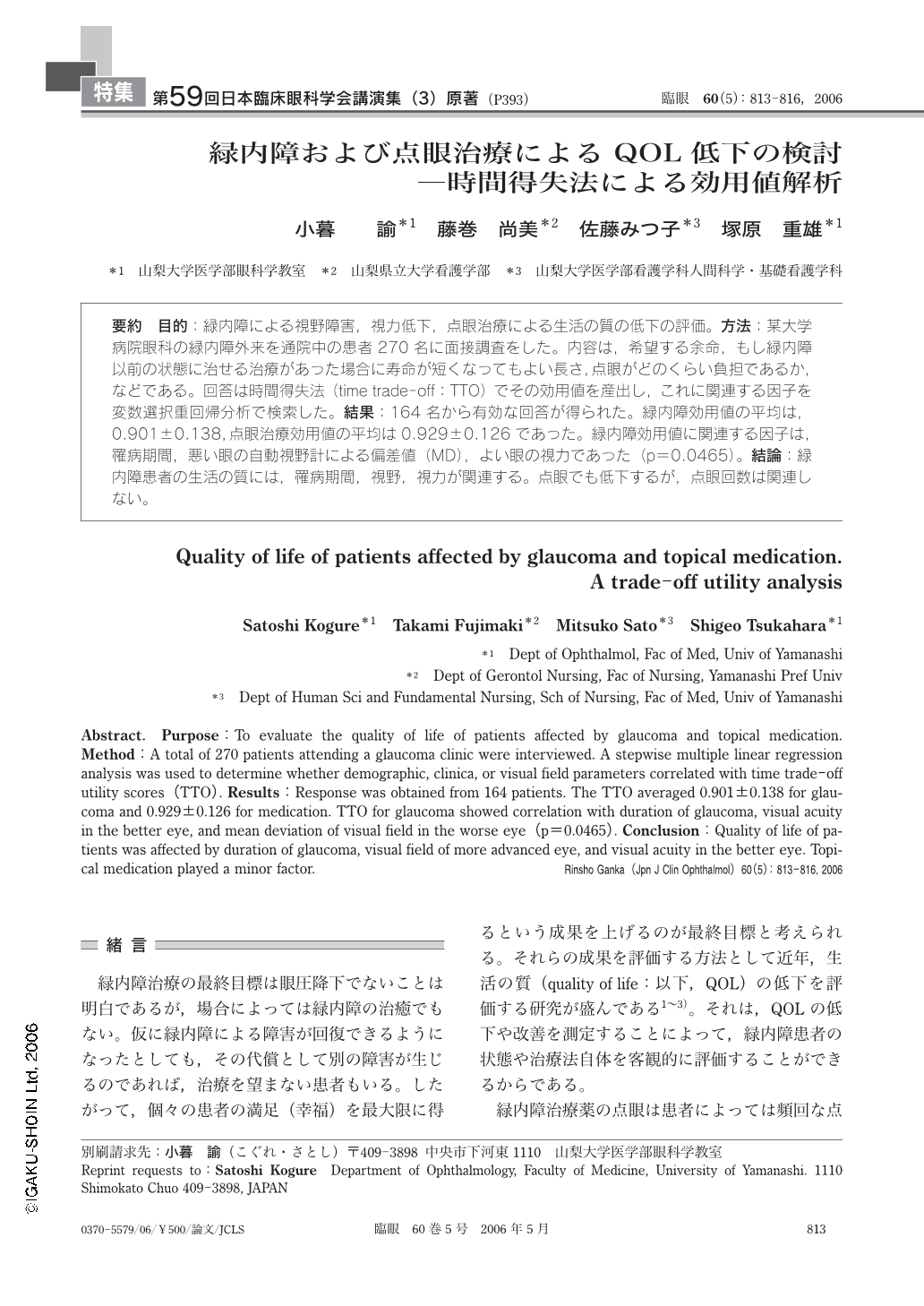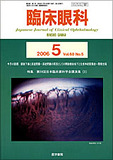Japanese
English
- 有料閲覧
- Abstract 文献概要
- 1ページ目 Look Inside
- 参考文献 Reference
目的:緑内障による視野障害,視力低下,点眼治療による生活の質の低下の評価。方法:某大学病院眼科の緑内障外来を通院中の患者270名に面接調査をした。内容は,希望する余命,もし緑内障以前の状態に治せる治療があった場合に寿命が短くなってもよい長さ,点眼がどのくらい負担であるか,などである。回答は時間得失法(time trade-off:TTO)でその効用値を産出し,これに関連する因子を変数選択重回帰分析で検索した。結果:164名から有効な回答が得られた。緑内障効用値の平均は,0.901±0.138,点眼治療効用値の平均は0.929±0.126であった。緑内障効用値に関連する因子は,罹病期間,悪い眼の自動視野計による偏差値(MD),よい眼の視力であった(p=0.0465)。結論:緑内障患者の生活の質には,罹病期間,視野,視力が関連する。点眼でも低下するが,点眼回数は関連しない。
Purpose:To evaluate the quality of life of patients affected by glaucoma and topical medication. Method:A total of 270 patients attending a glaucoma clinic were interviewed. A stepwise multiple linear regression analysis was used to determine whether demographic,clinica,or visual field parameters correlated with time trade-off utility scores(TTO). Results:Response was obtained from 164 patients. The TTO averaged 0.901±0.138 for glaucoma and 0.929±0.126 for medication. TTO for glaucoma showed correlation with duration of glaucoma,visual acuity in the better eye,and mean deviation of visual field in the worse eye(p=0.0465). Conclusion:Quality of life of patients was affected by duration of glaucoma,visual field of more advanced eye,and visual acuity in the better eye. Topical medication played a minor factor.

Copyright © 2006, Igaku-Shoin Ltd. All rights reserved.


